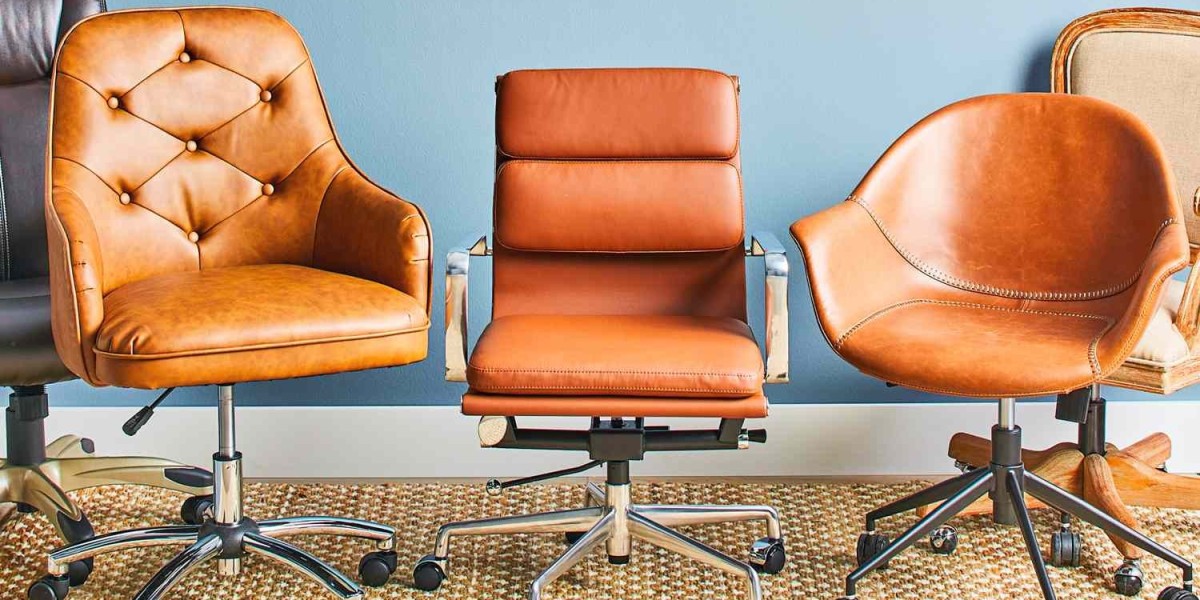Selecting the right office chair for your body type is essential for ensuring both comfort and productivity, especially during long hours at a desk. Different body types require specific features in a chair to provide proper support, encourage good posture, and reduce discomfort. Here's a guide to help you find the best office chair based on your body type:
1. For Taller People
Taller individuals often experience discomfort from standard chairs, which may not provide enough back support or legroom.
Key Features to Look For:
- Adjustable seat height: Look for chairs with a higher-than-average seat height, ideally with a range of 18 to 22 inches or more.
- Deep seat depth: A seat depth of at least 19 inches ensures your thighs are properly supported.
- High backrest: Ensure the backrest is tall enough to support your entire spine, including your upper back and shoulders.
- Lumbar support: Ensure it can be adjusted vertically to align with your lower back.
Recommended Chairs:
- Steelcase Gesture: Known for its deep seat and high weight capacity, it adapts well to taller users.
- Herman Miller Aeron (Size C): Offers three size options, with Size C designed for taller individuals.
2. For Shorter People
If you're shorter, standard chairs may cause your feet to dangle or force you to lean forward, which can lead to poor posture and discomfort.
Key Features to Look For:
- Seat height adjustability: Ensure the chair can lower to a height that allows your feet to rest flat on the floor (ideal range: 15-19 inches).
- Shallow seat depth: A seat depth of around 15-18 inches helps keep your back properly aligned while your feet are grounded.
- Lumbar support: Adjustable lumbar support to match the smaller curve of a shorter person’s spine.
- Adjustable armrests: Ensure they can be positioned low enough to support your arms comfortably.
Recommended Chairs:
- HON Ignition 2.0: Offers a seat depth adjustment feature that’s great for shorter users.
- Alera Elusion Series: Known for its adjustable seat depth and back height, making it versatile for shorter individuals.
3. For Heavier People
Chairs with limited weight capacity can feel unstable and uncomfortable for heavier individuals, so it's important to choose a chair that offers solid construction and ample support.
Key Features to Look For:
- High weight capacity: Look for chairs that support 300 lbs. or more, ideally with reinforced frames.
- Wide seat: Ensure the chair has a wide seat (around 20 inches or more) to accommodate your hips and thighs comfortably.
- Thicker padding: Heavier users may require extra seat padding for additional comfort and longevity.
- Robust lumbar support: A strong, adjustable lumbar system is necessary to provide back support and relieve pressure.
Recommended Chairs:
- Hercules Series Big & Tall Chair: Built to accommodate users up to 500 lbs., with a wide seat and heavy-duty construction.
- Duramont Ergonomic Adjustable Chair: Supports up to 330 lbs. and offers a highly adjustable design with good lumbar support.
4. For People with Back Pain
If you suffer from back pain, especially lower back pain, having a chair that provides proper lumbar support and encourages good posture is critical.
Key Features to Look For:
- Adjustable lumbar support: Look for a chair with lumbar support that can be adjusted for height and depth to perfectly align with your lower back.
- Recline and tilt function: The ability to recline or tilt backward relieves spinal pressure and encourages movement.
- Ergonomically shaped backrest: Ensure the backrest follows the natural S-shape of your spine for optimal support.
- Seat cushioning: Adequate padding is essential to prevent pressure points.
Recommended Chairs:
- Steelcase Leap: Known for its excellent lumbar support and flexible backrest that adjusts with your movements.
- Herman Miller Embody: Designed to reduce back strain with its spine-like backrest that aligns with your posture.
5. For People with Hip Pain
If you have hip discomfort, a chair with a seat that is too hard or too narrow can exacerbate the issue. You'll need a chair that provides pressure relief and room for your hips.
Key Features to Look For:
- Seat cushion with padding: A chair with a thick, cushioned seat can reduce pressure on your hips.
- Seat depth adjustment: To ensure the chair isn’t too deep, allowing your hips and lower back to remain properly aligned.
- Waterfall seat edge: A rounded or “waterfall” seat edge reduces pressure on the thighs and promotes better circulation.
- Wide seat: Ensures your hips aren’t compressed, providing a more comfortable seating experience.
Recommended Chairs:
- Branch Ergonomic Chair: Provides a wider seat and a waterfall edge, which alleviates hip discomfort.
- Serta AIR Health and Wellness Chair: Offers thick seat padding and a design focused on comfort and pain relief.
6. For People with Neck or Shoulder Pain
Neck and shoulder pain can often result from improper posture and lack of support for the upper body. A high-back chair with headrest support is essential.
Key Features to Look For:
- Headrest: An adjustable headrest helps reduce neck strain by supporting your head and neck.
- High backrest: A high backrest that supports your upper back and shoulders can relieve shoulder tension.
- Tilt and recline function: Being able to tilt the chair back can help take pressure off your neck and shoulders.
- Adjustable armrests: Ensure armrests are adjustable to help relieve shoulder strain and prevent hunched shoulders.
Recommended Chairs:
- Humanscale Freedom Chair with Headrest: Automatically adjusts to your movements and offers great support for your neck and shoulders.
- Nouhaus Ergo3D Chair: Comes with a headrest and a fully adjustable design that provides neck, shoulder, and lumbar support.
7. For Slim or Petite Users
Slim or petite users may find themselves floating in larger chairs with deep seats, which can lead to discomfort or poor posture. Finding a chair that fits your proportions is key.
Key Features to Look For:
- Narrow seat width: A narrower seat (around 16-19 inches) ensures a snug and comfortable fit.
- Adjustable seat depth: A shallower seat depth of around 15-18 inches will help ensure your back stays supported without straining your legs.
- Adjustable armrests: Ensure armrests are close enough to offer support.
- Lightweight frame: A chair that’s easy to adjust and move.
Recommended Chairs:
- Steelcase Amia: Its narrow frame and adjustable features make it a great fit for petite users.
- HON Exposure: Provides adjustability in seat height, depth, and back support, ideal for smaller users.
Conclusion: Choosing the Right Chair for Your Body Type
Finding the right office chair tailored to your body type will improve comfort, support, and overall productivity. Customization and adjustability are the key factors in making sure your chair provides the right fit for your body’s needs. Whether you are tall, short, heavyset, or have specific concerns like back or hip pain, the right office chair can make a huge difference in your daily comfort and health.







